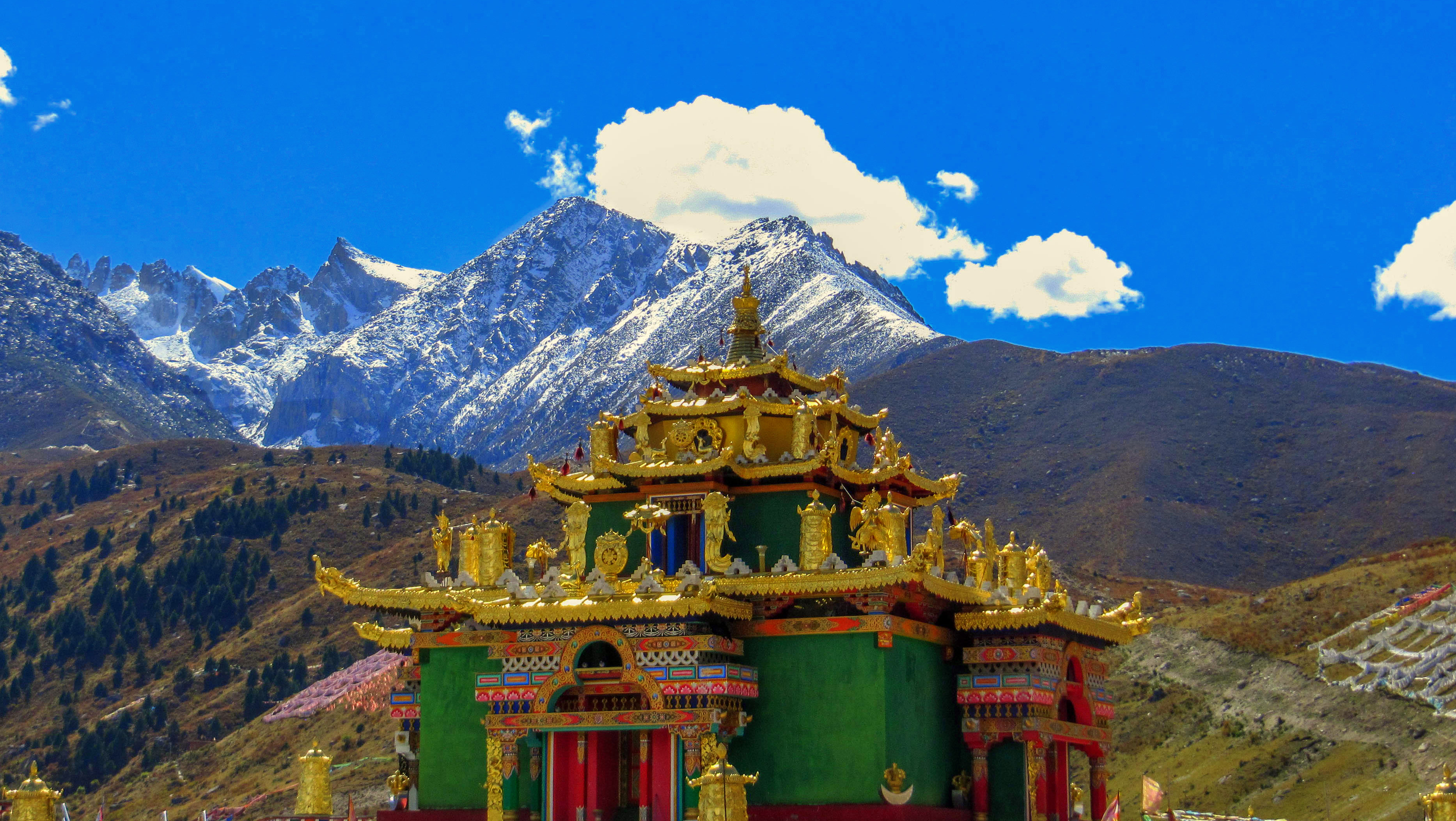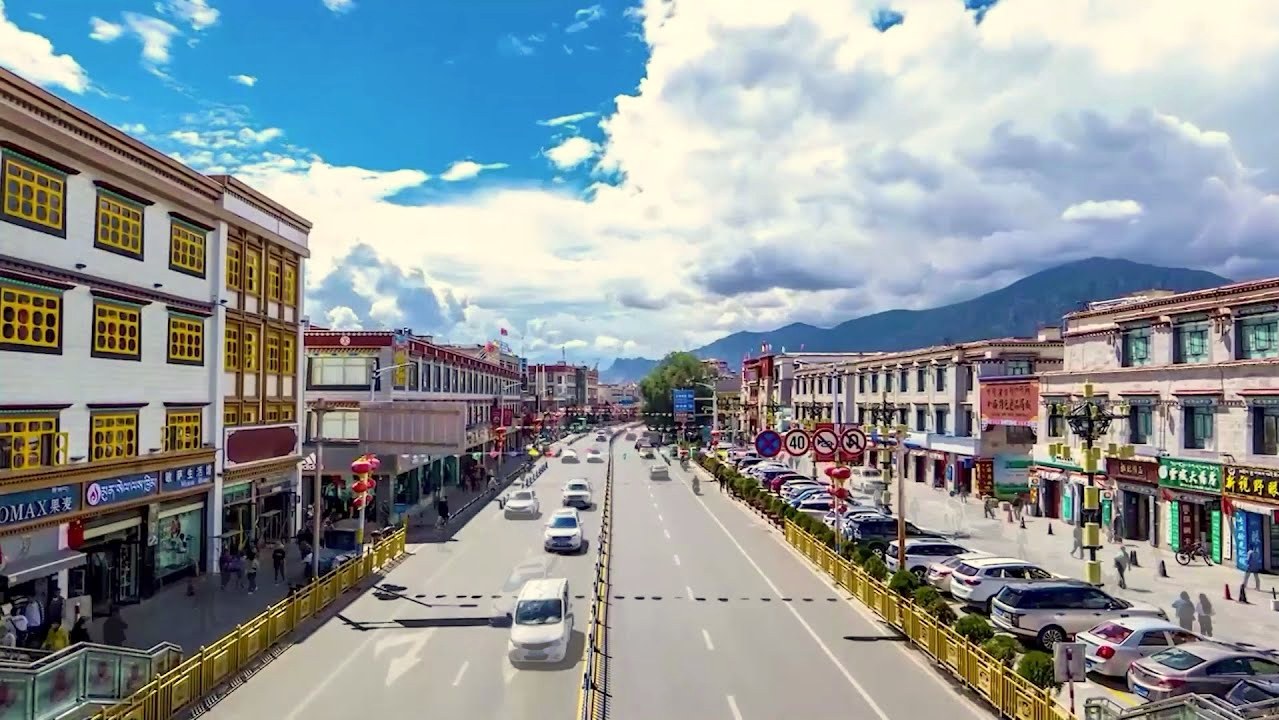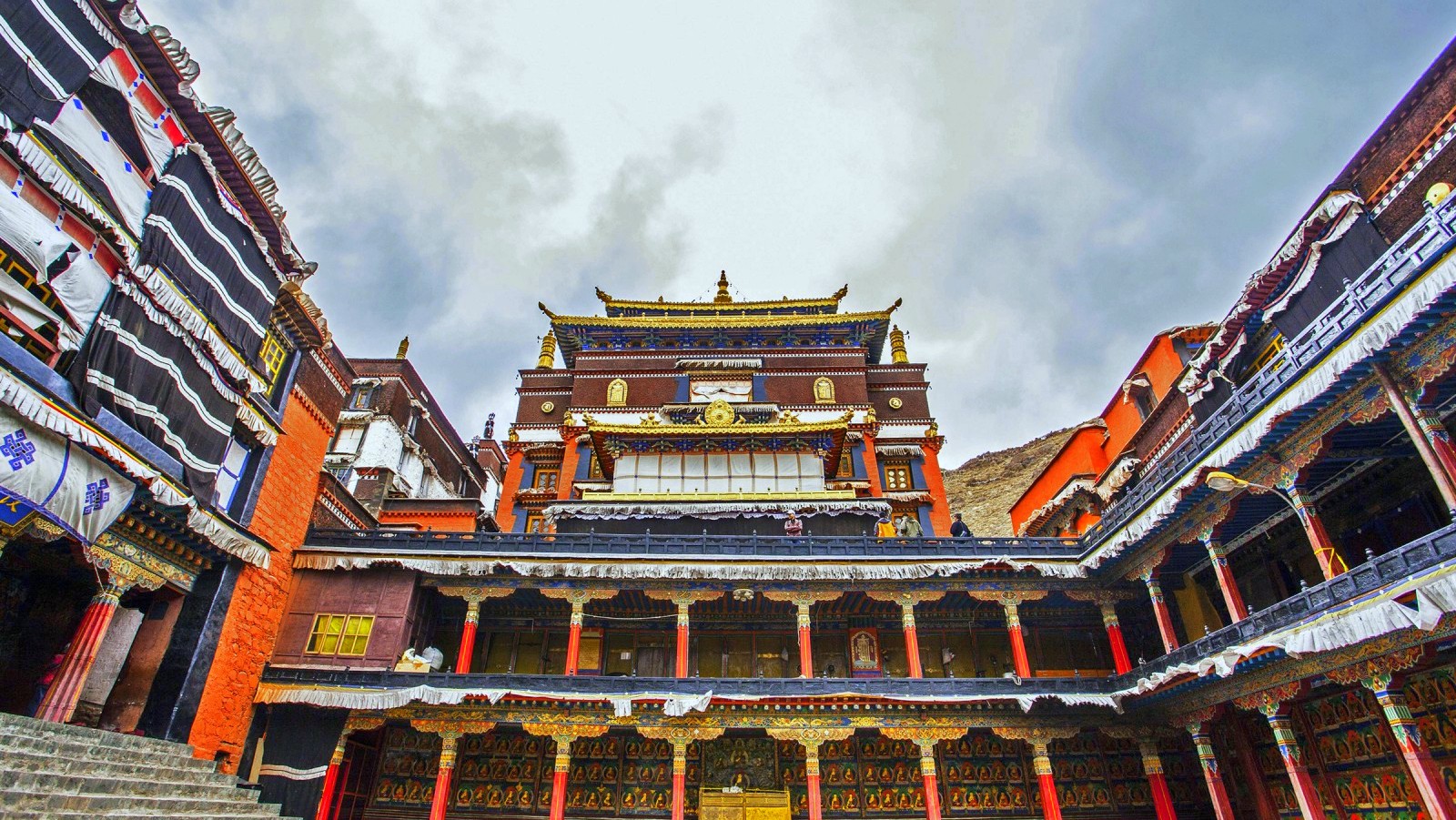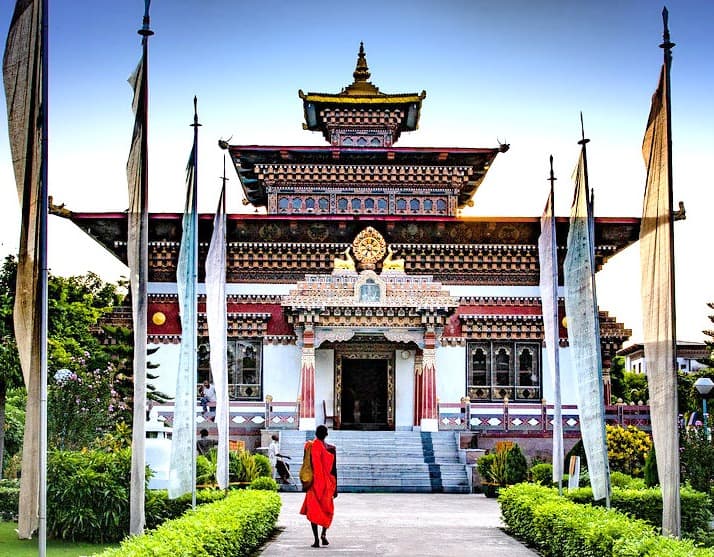Traveling to Tibet is a journey like no other, offering a unique blend of breathtaking landscapes, rich cultural heritage, and spiritual depth. For first-time travelers to Tibet, navigating this high-altitude region can present distinct challenges. Understanding essential Tibet travel tips is crucial for a smooth and enjoyable experience. From managing high-altitude travel and acclimatization to securing necessary Tibet travel permits and packing appropriately, proper Tibet travel preparation can make all the difference. Embracing Tibet cultural customs, staying hydrated, and planning transportation are also key to a successful trip. By following these essential tips for Tibet travel, you'll be well-equipped to tackle the Tibet travel challenges and make the most of your adventure in this extraordinary destination.

When it comes to navigating the unique challenges of traveling to Tibet, Druk Holidays is the best company to guide you. We specialize in providing essential tips for first-time travelers to Tibet, ensuring you have a smooth and memorable experience. From comprehensive Tibet travel preparation and securing the necessary Tibet travel permits to offering expert advice on high-altitude travel and local cultural customs, our team is dedicated to addressing all your needs. With Druk Holidays, you can confidently embark on your journey, equipped with the knowledge and support to overcome Tibet travel challenges and fully immerse yourself in the beauty and spirituality of Tibet.
High-Altitude Acclimatization
Traveling to Tibet presents unique challenges due to its high altitude, which can impact even the most seasoned travelers. Proper acclimatization is essential to ensure a smooth and enjoyable journey. Understanding and preparing for the effects of high altitude can make all the difference in your travel experience.
- Gradual Ascent: Spend a few days in Lhasa or other high-altitude areas to allow your body to adjust slowly to the reduced oxygen levels.
- Hydration: Drink plenty of water to stay hydrated and support your body in acclimating to the high altitude.
- Avoid Strenuous Activities: Limit physical exertion, especially during the first few days, to help your body adapt to the altitude.
- Balanced Diet: Eat light and easily digestible meals to aid digestion and prevent additional strain on your body.
- Medication: Consult your doctor about medications or supplements that can help with altitude sickness prevention.
- Rest and Relaxation: Ensure you get plenty of rest and avoid overexerting yourself to help your body acclimate more effectively.
- Recognize Symptoms: Be aware of symptoms of altitude sickness, such as headaches, nausea, and dizziness, and seek medical attention if they occur.
- Seek Local Advice: Follow local recommendations and guidelines for acclimatization and altitude sickness management.
By following these high-altitude acclimatization tips, you can better prepare yourself for the unique challenges of traveling to Tibet. Proper acclimatization not only enhances your comfort but also ensures you can fully enjoy the breathtaking landscapes and rich cultural experiences that Tibet has to offer.
Permits and Documentation
Traveling to Tibet requires careful preparation, particularly when it comes to obtaining the necessary permits and documentation. These are essential to ensure a smooth entry and compliance with local regulations. Properly managing these requirements will help you avoid delays and enjoy your trip without complications.
- Tibet Travel Permit: Essential for all travelers, this permit is required to enter Tibet and must be obtained through a licensed travel agency.
- Additional Permits: Depending on your travel itinerary, you may need additional permits for specific regions like Mount Everest or restricted border areas.
- Visa Requirements: Ensure your passport and Chinese visa are valid for the duration of your stay in Tibet, as they must be presented along with your Tibet Travel Permit.
- Advance Planning: Apply for permits well in advance, as processing can take several weeks. Start the application process at least 1-2 months before your departure.
- Travel Agency Assistance: Utilize the services of a reputable travel agency, like Druk Holidays, to handle the permit application process and ensure all necessary documentation is in order.
- Permit Collection: Some permits are collected upon arrival in Tibet, so be prepared to present your documents at the airport or entry point.
- Document Safety: Keep copies of your permits and important documents in a secure place separate from the originals in case of loss or theft.
- Regulatory Updates: Stay informed about any changes in permit regulations or requirements, as policies can evolve.
Proper management of permits and documentation is crucial for a hassle-free visit to Tibet. By securing the necessary permits in advance and adhering to regulations, you can ensure a smooth entry and focus on enjoying the incredible experiences that await in this unique and stunning destination.
Packing Essentials
When preparing for a trip to Tibet, packing wisely is crucial due to the region's diverse climate and high altitude. Proper packing ensures you are comfortable and well-equipped to handle the unique conditions you’ll encounter.
- Layered Clothing: Pack a range of clothing layers to adapt to fluctuating temperatures. Include thermal wear, a warm jacket, and moisture-wicking base layers.
- Warm Accessories: Bring gloves, a hat, and a scarf to protect against cold temperatures and strong winds, especially at higher altitudes.
- Sun Protection: Include sunscreen with high SPF, sunglasses, and lip balm to shield yourself from the intense sun at high altitudes.
- Hydration Supplies: Carry a reusable water bottle and purification tablets to stay hydrated and ensure safe drinking water.
- Comfortable Footwear: Pack sturdy, comfortable walking shoes or hiking boots suitable for varied terrain and long walks.
- Health Essentials: Bring a basic first-aid kit, any personal medications, and altitude sickness remedies to manage health issues that might arise.
- Camera Gear: If you’re keen on capturing Tibet’s stunning landscapes, include a camera with extra batteries and memory cards.
- Travel Documents: Keep your passport, Tibet Travel Permit, and any other important documents in a secure and easily accessible place.
Effective packing for Tibet requires attention to the region's specific needs, including temperature variations, sun exposure, and terrain. By including these packing essentials, you'll be well-prepared for a comfortable and enjoyable adventure, allowing you to fully immerse yourself in the beauty and culture of Tibet.
Cultural Sensitivity
Understanding and respecting local customs and traditions is vital when traveling to Tibet. Being culturally sensitive not only enhances your travel experience but also fosters positive interactions with the local community. Here’s how to navigate Tibet’s rich cultural landscape respectfully.
- Dress Modestly: Wear conservative clothing, particularly when visiting religious sites and monasteries. Avoid revealing attire and opt for long sleeves and pants.
- Respect Religious Practices: When visiting monasteries or temples, remove your hat and follow local customs. Refrain from touching religious artifacts or entering restricted areas.
- Seek Permission for Photos: Always ask for permission before taking photographs of people, especially monks or during religious ceremonies. Some individuals may prefer not to be photographed.
- Respect Local Etiquette: Follow local etiquette, such as walking clockwise around religious monuments (e.g., stupas) and using your right hand for handing or receiving items.
- Observe Silence in Sacred Areas: Maintain a respectful silence or speak in hushed tones in places of worship and during spiritual ceremonies to honor the solemnity of these spaces.
- Avoid Disrespectful Gestures: Do not point your feet at people or religious objects, as feet are considered unclean in Tibetan culture. Similarly, avoid using gestures that could be interpreted as rude.
- Participate Respectfully: Engage with local festivals and traditions with an open mind and respect. Understanding the significance of these events can deepen your appreciation for Tibetan culture.
- Learn Basic Local Phrases: Learning a few basic Tibetan phrases or greetings can go a long way in showing respect and making a positive impression.
By adhering to these guidelines for cultural sensitivity, you can ensure that your visit to Tibet is respectful and enriching. Embracing local customs and traditions not only enhances your travel experience but also contributes to a positive exchange with the Tibetan people, making your journey even more memorable.
Hydration and Nutrition
In the high-altitude environment of Tibet, proper hydration and nutrition are essential for maintaining health and comfort. The unique conditions can impact your body’s needs, so understanding and addressing these needs is crucial for an enjoyable trip.
- Stay Hydrated: Drink plenty of water throughout the day to prevent dehydration, which is common at high altitudes. Carry a reusable water bottle and consider using purification tablets to ensure water safety.
- Monitor Fluid Intake: Be mindful of your fluid intake, especially if you’re feeling symptoms of altitude sickness. Proper hydration helps your body adapt and function efficiently.
- Light, Balanced Meals: Opt for light and easily digestible foods to avoid digestive issues. Incorporate a balanced diet with carbohydrates, proteins, and healthy fats to maintain energy levels.
- Avoid Heavy Foods: Steer clear of rich, heavy meals that can be hard on your digestive system, particularly during the initial days of your stay.
- Include Electrolytes: Consider drinks or supplements that replenish electrolytes to help balance your body’s fluids and prevent symptoms like fatigue or dizziness.
- Local Cuisine: Enjoy Tibetan cuisine, such as tsampa (roasted barley flour) and momos (dumplings), which are well-suited to the local climate. However, start with small portions to gauge how your body reacts.
- Eat Regularly: Maintain a regular eating schedule to keep your energy levels stable and support acclimatization. Small, frequent meals can be easier on your digestive system.
- Be Aware of Symptoms: Pay attention to your body’s signals and adjust your hydration and nutrition as needed. Symptoms of altitude sickness can sometimes be alleviated by proper fluid and food intake.
Managing hydration and nutrition effectively is crucial for a comfortable and enjoyable experience in Tibet’s high-altitude environment. By staying hydrated, eating balanced meals, and adapting your diet to the local conditions, you can better support your body’s adjustment to the altitude and fully enjoy your adventure in this extraordinary region.
Transportation Planning
Navigating the rugged terrain of Tibet requires careful planning and reliable transportation. Given the region's remote and mountainous landscapes, understanding your options and making arrangements in advance is crucial for a smooth and enjoyable journey.

- Choose Reliable Transport: Opt for reliable transportation methods, such as private vehicles or guided tours, to handle Tibet’s challenging terrain. Ensure your transport provider is experienced in navigating high-altitude routes.
- Book in Advance: Arrange your transportation well ahead of time to secure availability and avoid last-minute issues. This includes flights, road transfers, and any local travel arrangements.
- Consider Road Conditions: Be prepared for variable road conditions, including narrow, winding roads and potential weather-related challenges. A vehicle with good suspension and a knowledgeable driver is essential.
- Local Transportation Options: In cities like Lhasa, consider using local taxis or rented bicycles for short distances. For more remote areas, you may need to rely on specialized vehicles or trekking options.
- Check Vehicle Condition: Ensure the vehicle you use is well-maintained and equipped with necessary safety features. A comfortable and reliable vehicle will enhance your travel experience.
- Travel Permits and Documentation: Carry all necessary travel permits and documents with you, as checkpoints may require them during your journey. Keep these documents readily accessible.
- Flexibility and Patience: Be prepared for potential delays due to weather or road conditions. Flexibility and patience are important for a stress-free travel experience.
- Guided Tours: Consider joining a guided tour for added convenience and local expertise. Guides can handle logistics, provide valuable insights, and ensure you visit key attractions safely and efficiently.
Effective transportation planning is essential for navigating Tibet’s unique and challenging landscape. By choosing reliable transportation options, booking in advance, and being prepared for the conditions, you can ensure a smooth and enjoyable journey through this remarkable region.
Health and Safety
Ensuring your health and safety during a trip to Tibet is crucial due to the high altitude, remote locations, and variable conditions. Proper preparation and precautions will help you enjoy your journey while minimizing potential health risks.
- Altitude Sickness Prevention: Acclimatize gradually to the high altitude by spending a few days in Lhasa before traveling to higher elevations. Stay hydrated and avoid strenuous activities initially to help your body adjust.
- Basic First-Aid Kit: Pack a comprehensive first-aid kit, including medications for altitude sickness, pain relievers, antiseptic wipes, bandages, and any personal prescriptions.
- Travel Insurance: Secure travel insurance that covers medical emergencies and evacuation. This ensures you have access to necessary medical care in case of unforeseen issues.
- Vaccinations and Health Precautions: Check with your healthcare provider about recommended vaccinations and health precautions before traveling to Tibet. Ensure you have up-to-date vaccinations for preventable diseases.
- Local Medical Facilities: Be aware that medical facilities in Tibet may be limited, particularly in remote areas. Familiarize yourself with the locations of available medical facilities and their capabilities.
- Avoid Contaminated Food and Water: To prevent gastrointestinal issues, avoid drinking untreated water and be cautious with food hygiene. Stick to bottled or purified water and choose well-cooked meals.
- Emergency Contacts: Keep a list of emergency contacts, including local medical facilities, your tour operator, and embassy contact information, readily accessible.
- Health Monitoring: Monitor your health regularly and be aware of symptoms like persistent headaches, dizziness, or shortness of breath, which could indicate altitude sickness or other health issues.
Prioritizing health and safety is essential for a successful trip to Tibet. By preparing for altitude challenges, packing a first-aid kit, securing travel insurance, and being mindful of local health conditions, you can enjoy your journey while maintaining your well-being.
Spiritual Experience
Tibet is renowned for its profound spiritual heritage, offering visitors a unique opportunity for personal reflection and spiritual growth. The region’s serene landscapes and sacred sites provide an immersive experience that can deeply enrich your journey.

- Visit Monasteries: Explore famous monasteries such as Sera, Drepung, and Tashilhunpo to witness traditional rituals, engage with monks, and gain insight into Tibetan Buddhism.
- Participate in Festivals: Experience local festivals like Losar (Tibetan New Year) and Saga Dawa, which offer a vibrant glimpse into Tibetan spiritual and cultural traditions.
- Meditate in Sacred Spaces: Take time for meditation in tranquil settings, such as the Jokhang Temple or the Potala Palace, where the peaceful atmosphere enhances spiritual contemplation.
- Engage in Rituals: Observe or participate in traditional Tibetan rituals, such as butter lamp offerings and prayer wheel spinning, which are integral to local spiritual practices.
- Explore Sacred Landscapes: Visit spiritually significant locations like Mount Kailash and Lake Manasarovar, which are revered as sacred sites and offer profound spiritual experiences.
- Learn from Local Monks: Engage with Tibetan monks and lamas to gain a deeper understanding and insights into Buddhist teachings and practices. Many monasteries offer teachings or discussions for visitors.
- Practice Mindfulness: Embrace mindfulness and presence as you travel, reflecting on the spiritual significance of your surroundings and your personal journey.
- Respect Local Traditions: Approach your spiritual experience with respect and humility, adhering to local customs and practices to honor the sacred nature of the sites and traditions you encounter.
A spiritual experience in Tibet offers an unparalleled opportunity for personal growth and reflection. By immersing yourself in the region’s rich spiritual heritage, engaging with local traditions, and exploring sacred sites, you can gain profound insights and enrich your journey in this extraordinary land.
Best Time to Visit Tibet
Choosing the best time to visit Tibet depends on your preferences for weather and activities. Each season offers a unique perspective on this high-altitude region, from vibrant festivals to serene landscapes. Here’s a seasonal guide to help you plan your trip.
Spring (April to June)
- Weather: Spring in Tibet is characterized by gradually warming temperatures and blooming landscapes. Daytime temperatures range from 10°C to 20°C (50°F to 68°F), while nights can still be chilly.
- Highlights: This is an excellent time to witness the stunning natural beauty of Tibet as flowers begin to bloom and the landscape transforms. Spring is ideal for trekking and exploring cultural sites without the intense crowds of peak season.
- Events: Early spring is also the time for Tibetan festivals such as Saka Dawa, which celebrates the birth, enlightenment, and death of Buddha.
Summer (July to September)
- Weather: Summer brings warmer temperatures, ranging from 15°C to 25°C (59°F to 77°F), and is considered the best time for travel in terms of weather. However, it can also bring increased rainfall, especially in the eastern regions.
- Highlights: Summer offers lush green valleys, clear skies, and optimal conditions for trekking and outdoor activities. It’s also a great time to visit high-altitude lakes and enjoy the vibrant Tibetan festivals.
- Events: This season features major festivals like Horse Racing Festivals in various regions and the Shoton Festival in Lhasa, showcasing Tibetan opera, traditional dance, and local cuisine.
Autumn (October to November)
- Weather: Autumn in Tibet is marked by cooler temperatures, ranging from 10°C to 20°C (50°F to 68°F), with crisp air and minimal rainfall. The landscape remains clear and is often bathed in beautiful golden light.
- Highlights: This is a prime time for photography and sightseeing, as the clear skies and striking autumn colors create a picturesque setting. The weather is still relatively mild, making it a comfortable time for travel.
- Events: Autumn is a quieter time with fewer tourists, allowing for a more peaceful experience at major attractions and cultural sites.
Winter (December to March)
- Weather: Winter in Tibet can be harsh, with temperatures dropping below freezing and snow covering the landscapes. Daytime temperatures range from -10°C to 10°C (14°F to 50°F), while nights can be extremely cold.
- Highlights: Winter is the least crowded time, offering a tranquil and solitary experience. The snow-covered landscapes create a magical atmosphere, especially around monasteries and sacred sites.
- Events: Despite the cold, winter features important Tibetan festivals like Losar, the Tibetan New Year, celebrated with traditional rituals, dances, and family gatherings.
The best time to visit Tibet depends on your interests and tolerance for weather conditions. Spring and autumn are ideal for mild weather and fewer crowds, summer offers the warmest and most vibrant conditions for outdoor activities, while winter provides a serene, snow-covered experience with unique cultural festivals.
Traveling to Tibet for the first time is a journey filled with awe-inspiring landscapes and rich cultural experiences. By following these essential tips for first-time travelers to Tibet, you can navigate the unique challenges of high-altitude travel, ensure smooth logistics, and immerse yourself fully in the region’s spiritual and cultural heritage. Proper high-altitude acclimatization, careful packing, and understanding cultural customs are key to enjoying your trip. Staying hydrated, planning your transportation, and prioritizing health and safety will help you maintain comfort and well-being throughout your journey. Embracing the opportunity for a profound spiritual experience will enrich your visit even further. With thoughtful preparation and respect for local traditions, your adventure in Tibet will be both memorable and rewarding.
FAQs of Essential Tips for First-Time Travelers to Tibet
Q: What is the best time to visit Tibet?
A: The best time to visit Tibet is during spring (April to June) and autumn (October to November) for mild temperatures and clear skies. Summer (July to September) offers the warmest weather but may include rainfall, while winter (December to March) provides a serene, snow-covered experience with fewer crowds.
Q: How can I prevent altitude sickness in Tibet?
A: To prevent altitude sickness, acclimatize gradually by spending a few days at a lower altitude before ascending higher. Stay hydrated, avoid strenuous activities initially, and consider discussing altitude sickness medications with your healthcare provider.
Q: What permits do I need to travel to Tibet?
A: Travelers need a Tibet Travel Permit, which is required for entry into Tibet. Depending on your itinerary, additional permits may be needed for restricted areas like Mount Everest. Ensure all necessary permits are secured well in advance.
Q: What should I pack for a trip to Tibet?
A: Pack layered clothing for variable temperatures, warm accessories like gloves and a hat, sun protection such as sunscreen and sunglasses, and comfortable footwear. Also, include hydration supplies, a basic first-aid kit, and any necessary medications.
Q: How can I respect local customs while in Tibet?
A: To respect Tibet cultural customs, dress modestly, seek permission before taking photographs, and follow local etiquette such as walking clockwise around religious monuments. Be mindful of your behavior in sacred places and engage with local traditions respectfully.
Q: What are some key health and safety tips for traveling in Tibet?
A: Stay hydrated, carry a first-aid kit, and ensure you have travel insurance that covers medical emergencies. Avoid drinking untreated water and be aware of symptoms of altitude sickness. Familiarize yourself with the location of local medical facilities.
Q: What transportation options are available in Tibet?
A: Options include private vehicles, guided tours, and local taxis. Arrange transportation in advance, especially for remote areas. Be prepared for variable road conditions and consider using a reputable travel agency for logistics.
Q: How can I make the most of a spiritual experience in Tibet?
A: Visit major monasteries and sacred sites, participate in local festivals, and take time for meditation in tranquil settings. Engage with local monks, learn about Tibetan Buddhism, and approach your spiritual journey with respect and mindfulness.
Q: Are there any special considerations for food and drink in Tibet?
A: Yes, avoid consuming untreated water and be cautious with food hygiene. Stick to bottled or purified water and choose well-cooked meals to prevent gastrointestinal issues. Enjoy local cuisine but start with small portions to gauge your body’s reaction.
Q: How can I stay informed about travel updates for Tibet?
A: Stay updated on travel conditions and regulations by checking with your travel agency, monitoring official travel advisories, and keeping in touch with local contacts in Tibet. Regularly review any changes in permit requirements or local conditions before your trip.



